Setting up a hiking tent
Hiking Practice
When you first start hiking there are so many things to consider and often our focus is around things like gear selection, food or how to go to the toilet on the trail. While these are all important there are a number of other factors like getting a good nights sleep that come into play.
Factors that impact our sleep quality include staying dry, protection from strong winds, and the site itself. Hikers with a lot of experience know what to look for but between spending your first night in a tent that you have put up yourself and gaining all that experience and there are often a lot of bad nights of sleep that everyone goes through to gain that experience. This article discusses setting up your tent at the end of the day to help with getting the best sleep you possibly can.
Test test test
So you’ve just borrowed/purchased a tent how can you get the best sleep?
One thing to note here is that there is such a thing as first night syndrome that will impact on your sleep. Even with that you don’t want your first night on-trail to be the first time you put up your tent. Ideally if you have the time you should set up your tent at least once before you head out on-trail.
- In the image below we typically set up a tent inside the house as this allows us to get used to all the bits and pieces of the tent. Don’t worry if the tent isn’t freestanding, you can still go though the motions and work out any problems.
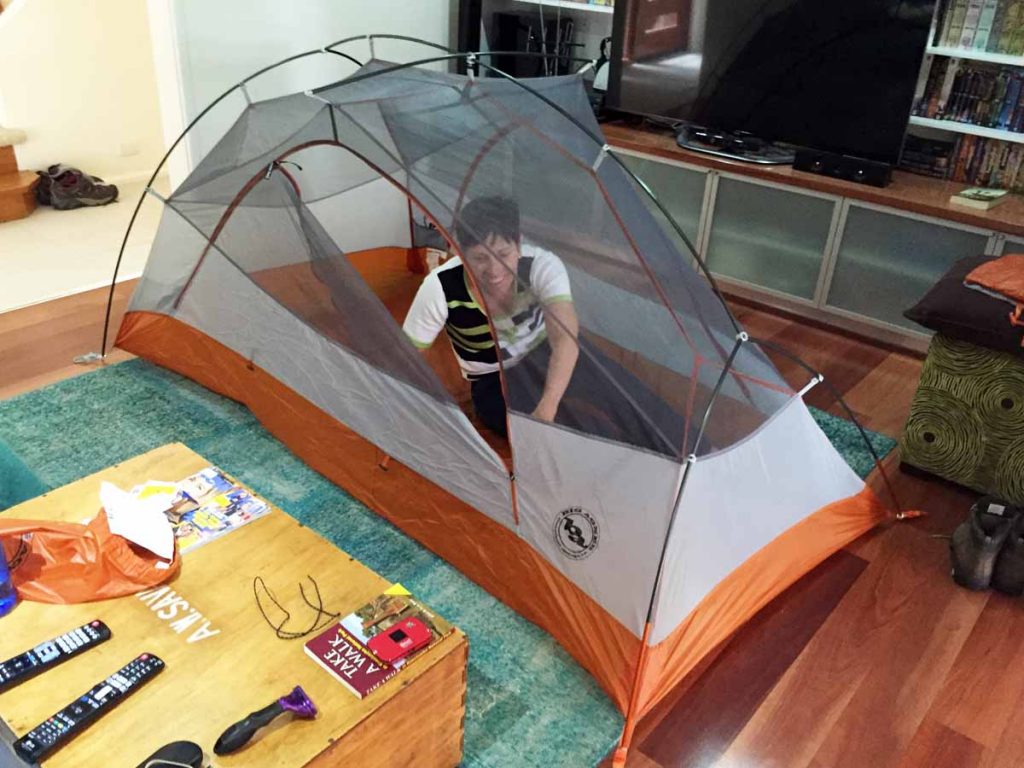
The first time we set up this tent was inside our TV room
2. The second time we set up a new tent we head out into the backyard or to a small grassy reserve. If you have a grassy backyard, spend the night in the tent. This will provide a realistic experience and identify any problems in an environment where you can resolve the issues in a controlled environment or if more work is needed, you can bail and fix the problems in the daylight.
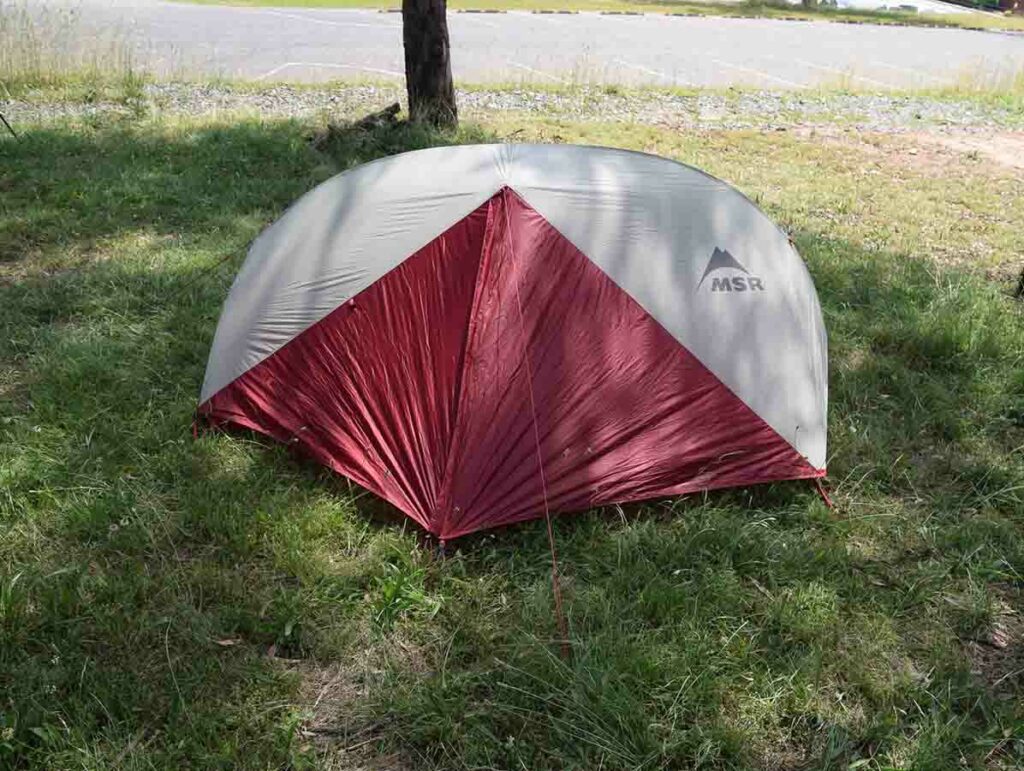
Another test before we went camping but this time in a nearby reserve
3. Do a Shakedown hike. If you haven’t already slept in your tent, a multi-day hike on a shakedown hike is the way to go. A shakedown hike is where you go camping with all your gear and test everything out. This will identify any flaws and if something goes wrong a single overnight hike isn’t usually going to be an issue. We do a shakedown hike when it’s been a while between trips and we want to make sure that everything works.
Choosing a good site
Choosing a good tent site is a skill that needs to be learnt and even after many years I still manage to get it wrong on occasion. Usually when I do it’s not just out by a bit, but its about as bad as you can get. So what do you need to look for when choosing a tent sits?
If you’re ‘wild camping‘ then you may be limited in where you can camp and you may not have a lot of choice when choosing a site. Other times you may have a location clearly in your mind but for whatever reason you may not reach your destination due to tiredness, poor conditions or injury. If you don’t have multiple site choices you will need to pick the best option you can find which may not be perfect.
Every so often I find that I’m losing focus because the conditions have been worse than I expected or I’m not feeling well for whatever reason. On these occasions you should stop short of a planned designated campsite because continuing to walk when you’ve lost focus can put you at risk of making a mistake. It’s better to stop short than to continue on at this point.
If you are staying at a designated campsite that has number of sites to choose from then spend some time and pick the ‘best’ site. There are a number of factors that will go into your choice.
- I will start looking for a campsite at around 3:30pm with the aim of having my tent sent up before its dark
- This timing will depend on the time of the year and the latitude. I had one night on the South Coast Track in Tasmania where I set up my tent around 9:00pm and it was still light
- Unless I’m planning on night hiking, I prefer to set up my tent in daylight although I’m comfortable doing it in the dark
- Find a site that’s as flat as possible
- You may need to do a bit of gardening. By this I mean you will need to move any sharp sticks or rocks from under the tent area. What you don’t want to do is destroy the natural environment in the process so pick a naturally clear site or use a site that someone else has used
- Ensure your protected from the elements
- If you are camping in open windy conditions similar to what you may find in the Australian Alps above tree level, you may want to get as much shelter as you can. This may be behind a rocky outcrop or setting up on the Military Crest (see image below)
- Avoid camping on the top of a bare hill or mountain when there a lightning storm as you then become the highest point around and a potential target for lightning strike. While this isn’t a common issue in Australia, its still a consideration
- How secluded is it?
- I like a bit of privacy when I hike and even if I’m travelling in a group I prefer to be off and away from everyone else. I also snore badly when I’m tired so I’m doing everyone a favour by keeping my distance
- What are the views like?
- Views over the clifftop or into the valley below can elevate a good campsite to a great campsite
- Look up, look around!
- Camping underneath trees that may potentially fall or drop limbs (widow makers) is risky. While I do like some overhead vegetation because it provides protection from the elements and helps to reduce condensation on the tent, you may be better off camping in the open if that’s an option
All these factors will contribute to what tent site you choose and are highly personal. Having said that, choosing a site that is relatively flat is the first priority. However, making allowances for other considerations may find you going for a less-than-flat site as a compromise but there is a limit.
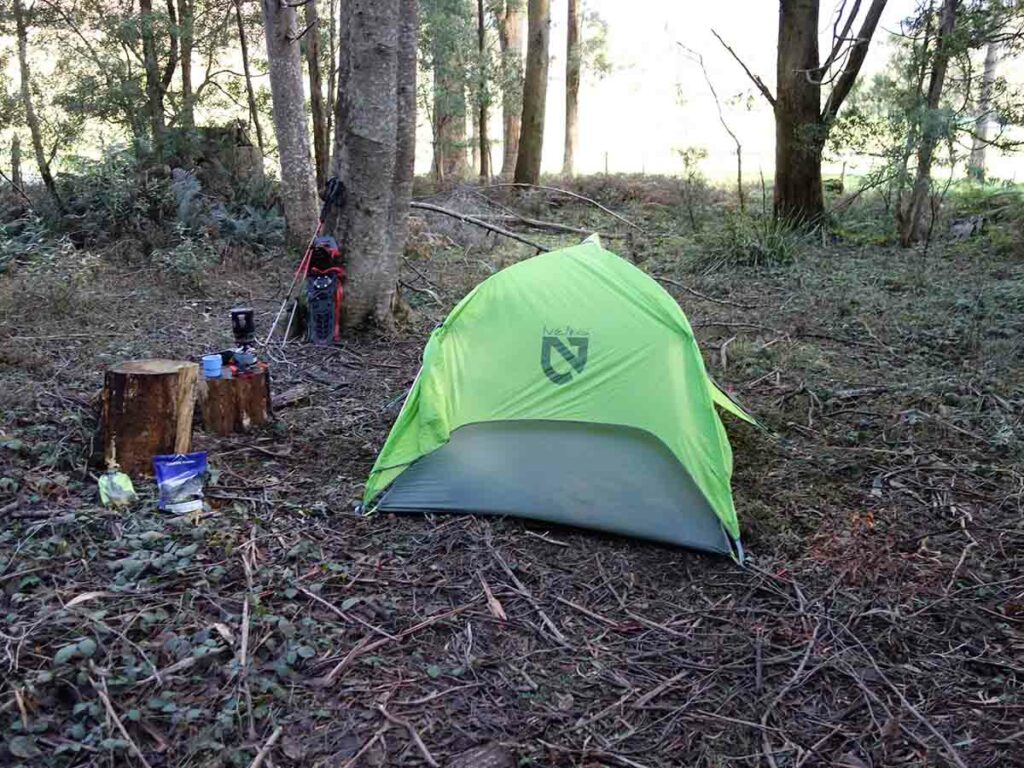
Pick a flat(ish) site that will allow you to site your tent so you can comfortably get in and out

A tent platform such as this one on the Murramarang South Coast Walk is a luxury option but not that common. These platforms also require you to be creative in setting up your tent and working out how to stabilise it

If I know I’ll be using a tent platform, I’ll carry some of these sand-snow pegs which allow me to stabilise the tent
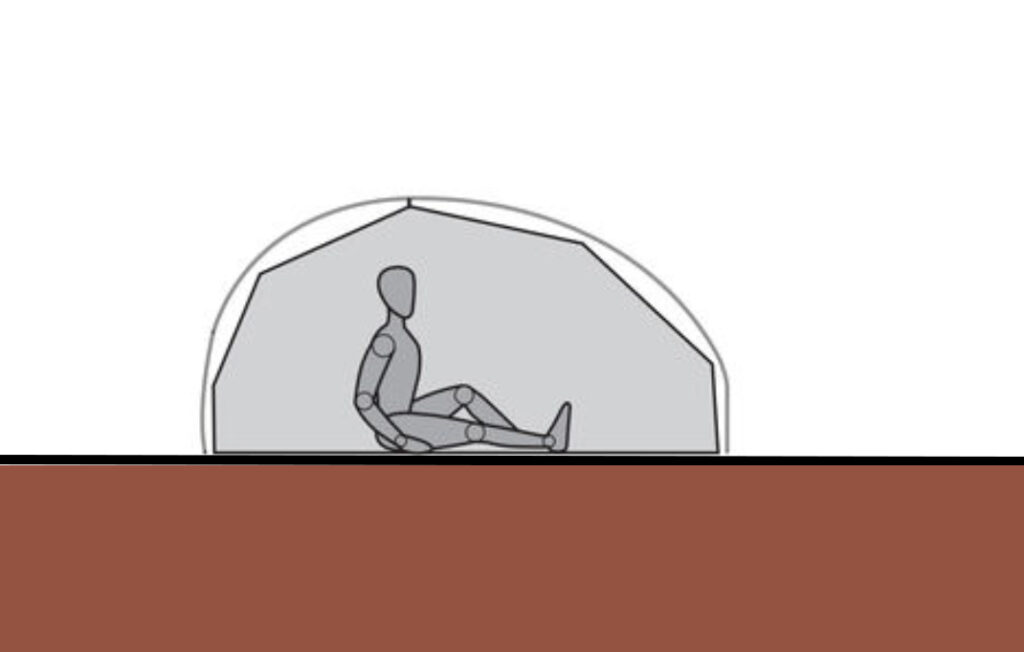
Go as flat as you can to get the best sleep. A slope larger than approximately 50 mm across the tent or along the tent will impact on your sleep because you’ll slide down or across the tent
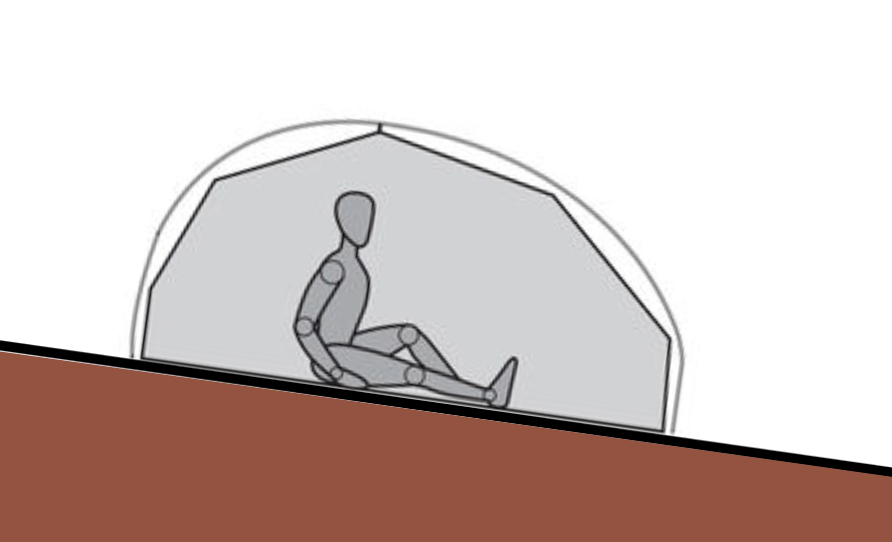
Slope from head to toe. If you don’t have a choice and have to put up your tent on a slope then have your head at the highest point. The angle shown in this image is extreme and you will spend the night sliding down the tent. As best as you can try to in minimise the slope to no more than approximately 50 mm in any direction
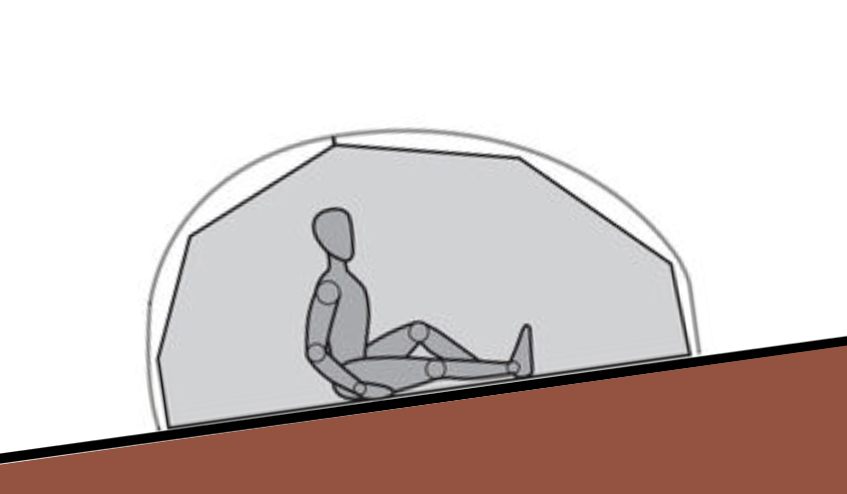
Slope from toe to head. In this situation I would rotate the head end of the tent so that my legs are down. I find that sleeping on a slope like this gives me a headache, even when it’s a much shallower slope than what this image shows
The above images show the slope of the tent along the length from head to toe. A slope across the width of the tent is less of an issue than along the length of the tent but can still ruin a good sleep given you’ll slide towards one side of the tent and potentially your partner if you’re sharing the tent.

A slope across the tent is also something to avoid if you can. In this image the slope doesn’t look too bad but its about 75 mm higher on the left hand side than the right and will definitely cause you to slide to the right overnight
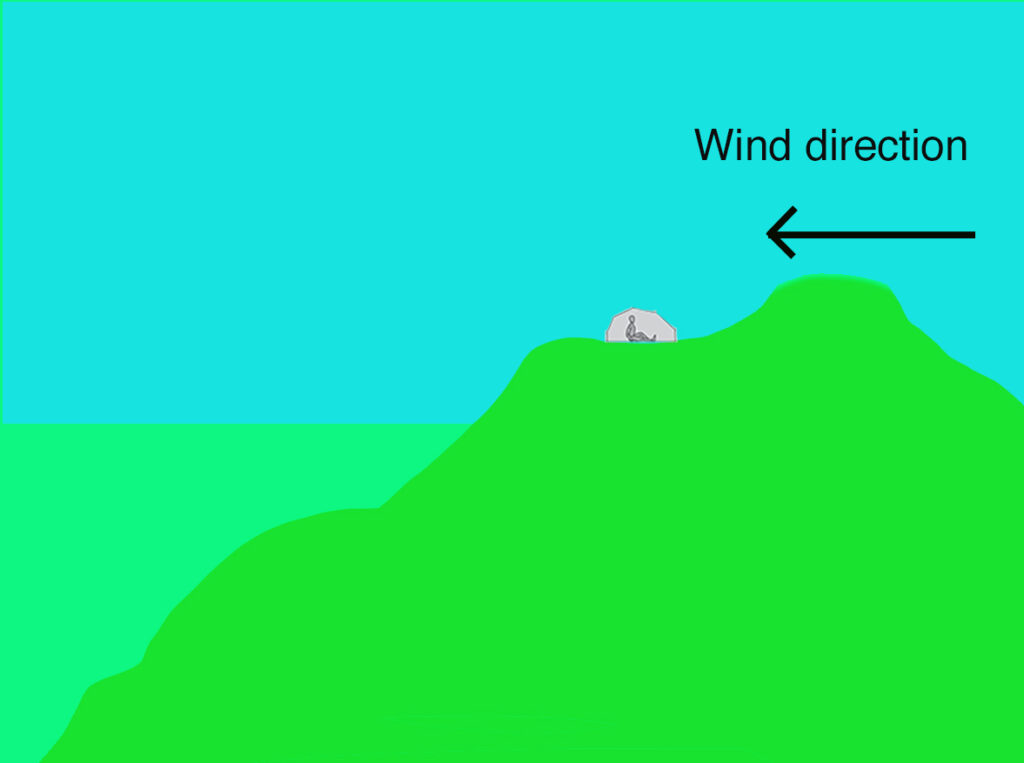
In addition to avoiding slopes you will also want some wind protection. A bit of breeze is a good thing as it will reduce tent condensation but too much wind will mean you’ll spend the whole night worrying about if you and your tent will blow away. Where possible if you can work out which way the wind is blowing, set up your tent so that it directs wind around the tent.
In the Australian Alps above the treeline you can be exposed to the prevailing weather. Sometimes camping using the crest of a hill to provide the protection is a good option and this is a term know as the term Military Crest. In the example in this image, you’re getting protection from the prevailing wind but even if the wind direction changes and comes up the hill, you will still have protection from the wind to a degree
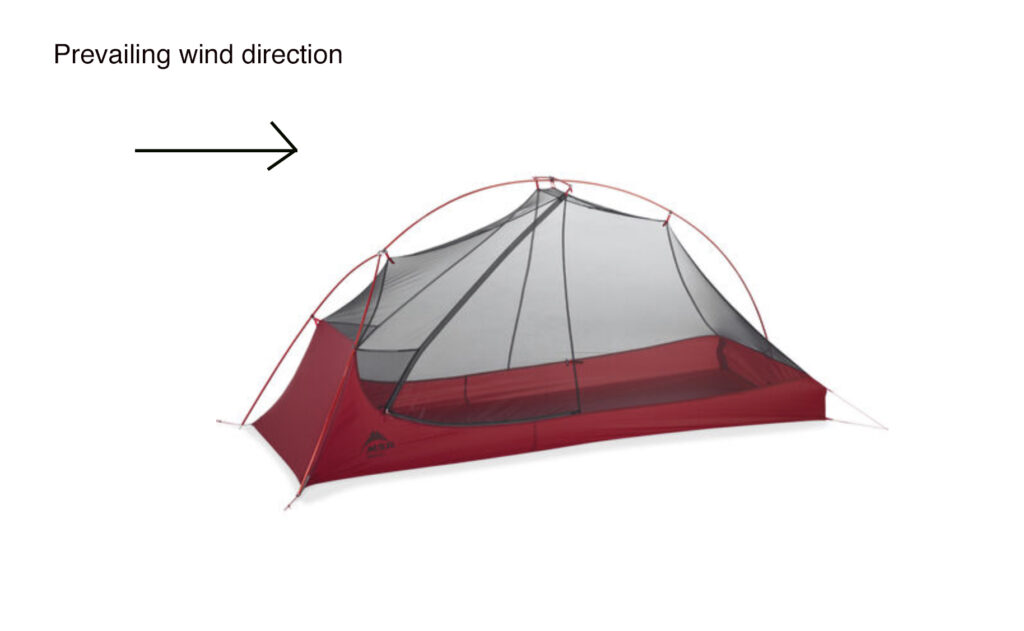
Wherever possible have the end/side of the tent with the smallest surface facing the prevailing wind. In the case of this tent, both ends are similar but using the end with the two poles presents the stronger end of the tent to the wind. If this tent is turned sideways you end up with a wide surface area into the wind putting more stress on the tent.
Sometime the wind seems to come from every direction and in that case you do the best that you can. If conditions are windy then use all the tent guy lines available

This was my tent site on the last night of the Tasmanian South Coast Track. I spent about 15 minutes working out where to set up my tent and then for some unknown reason, proceeded to offset it by about 40 centimetres from what I’d planned. That meant I slept with my head down and sloping to one side. This is the worst possible way to set up a tent and I spent all night fighting gravity
Keep it tight
When setting up your tent ensure that it’s not ‘floppy’ ensuring the material is firm on all sides. Loose material is more prone to tearing and will be noisy in windy conditions contributing to a sleepless night. On the other extreme don’t go so tight that you are stretching the seams of the tent. The image above shows a tent that is set up too loosely.
Start by setting out the four corners of the tent ensuring that they are firm. Get this first step right and the rest of the set up becomes easy. Getting your tent stabilised and firmly in place will be impacted by both the type of soil you expect and the impact of the wind. Choosing the right tent peg(s) will make all the difference and this may require you to do some research prior to going out on the trail.
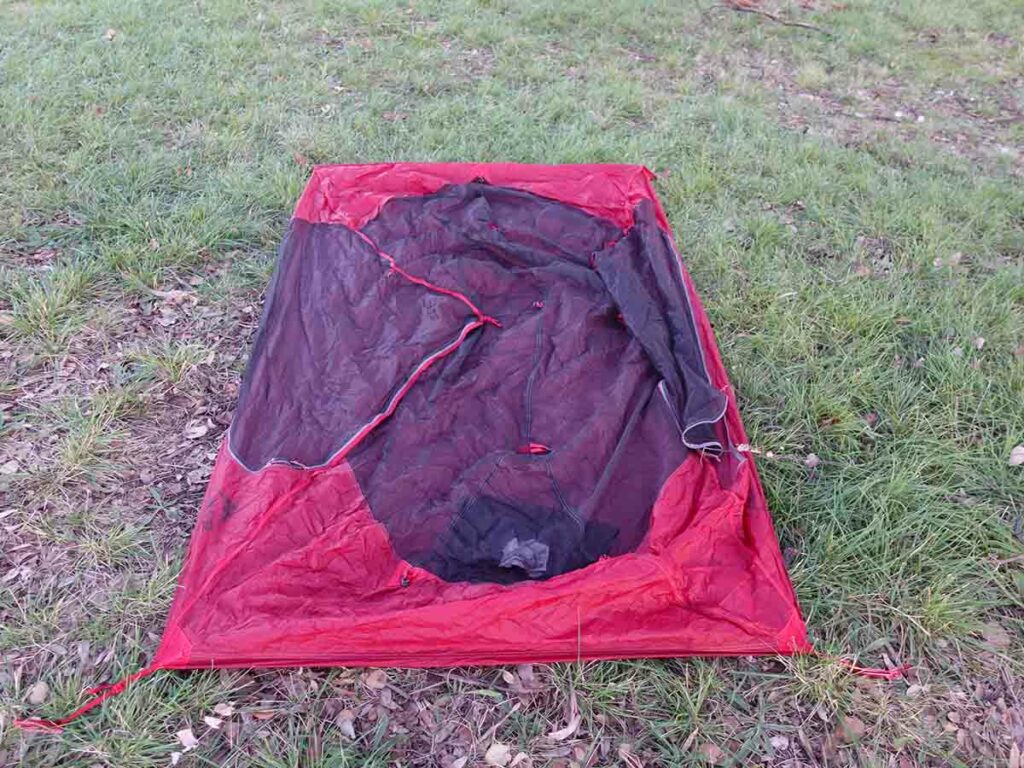
Get the base square and everything else should follow

When setting up your tent ensure that it’s not ‘floppy’ and ensure the material is firm on all sides. Loose material is more prone to tearing. In this image the base wasn’t set up firmly and this loose floppy side will transfer into the fly as well.
On the other extreme don’t go so tight that you are stretching the seams of the tent. The image above shows a tent that is set too loosely and will flap about during the night keeping you awake and also being prone to tearing.
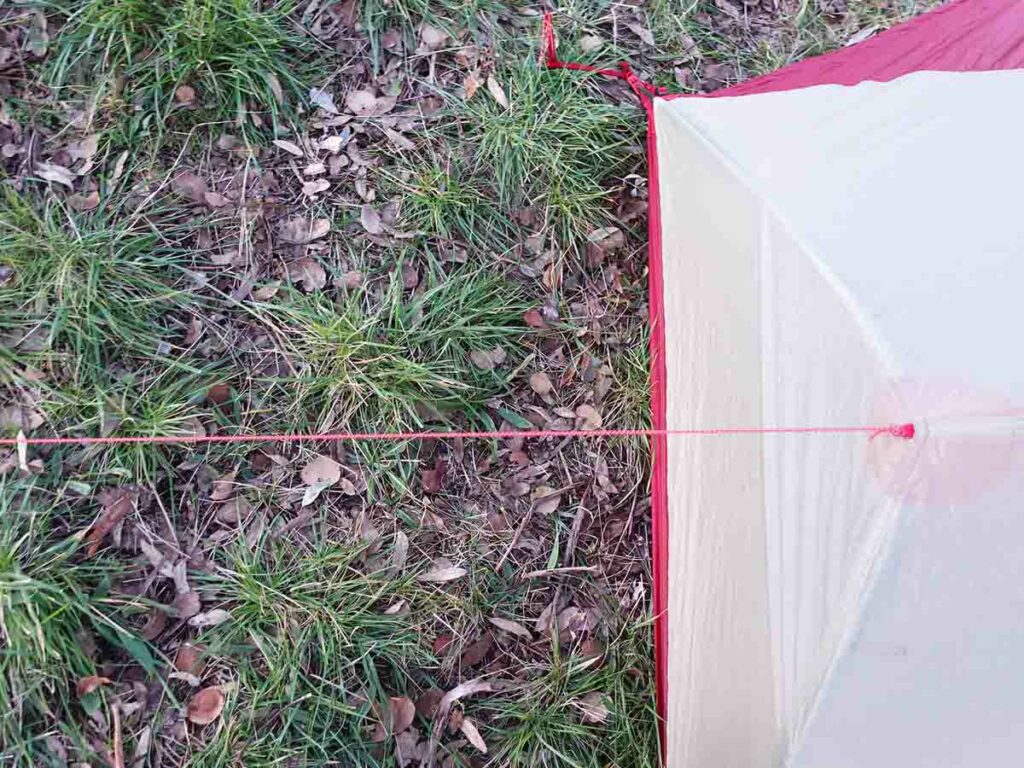
Tent tie down cord. In strong windy conditions use all available tie down points. Be aware that you may need some extra pegs and this is where a shakedown hike comes into play
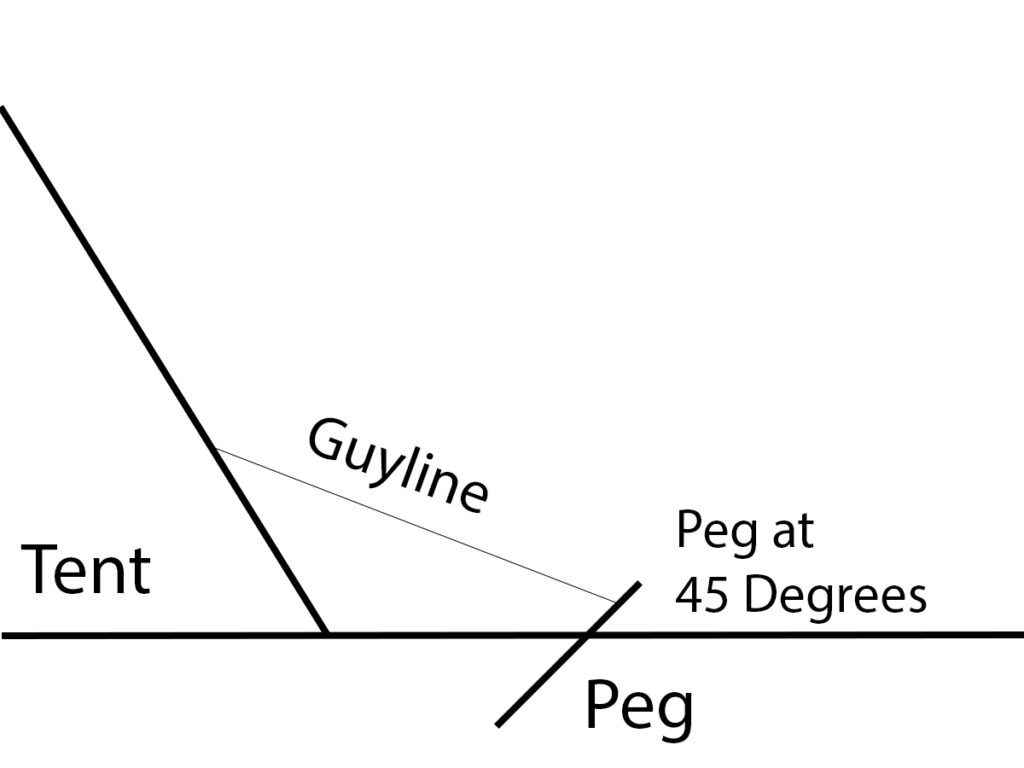
Tents stakes(pegs) are usually set in at a 45 degree angle. Choose the right stakes for the job
Last words
Choosing the best tent site and setting up your tent properly will create the best possible circumstances for a good sleep and this is something you have total control over in most cases. Having said that I still get it wrong occasionally. A brain snap ensures I make the wrong choice even though I know what I need to do but pay the price with a bad night.
I prefer to set up my tent in daylight and will usually stop hiking sometime between 3:30 and 5:00pm.
If you’re new to overnight camping aim to set up early as this will reduce any anxiety and ensure you’re comfortable with your equipment on-trail. The more experience you gain, the better your campsite choice will be and the more you’ll enjoy your adventure – after all, that’s what it’s all about.